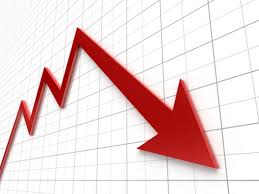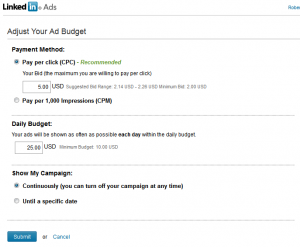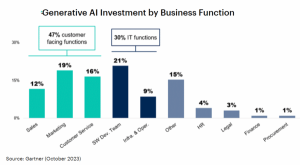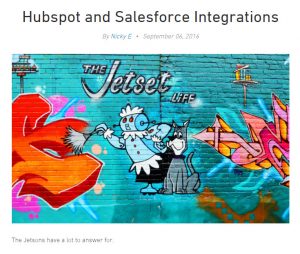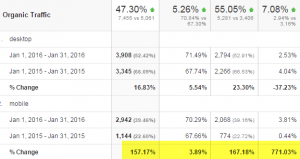MRM//McCann’s Randi Rosenfeld says nowadays the ‘social media war room’ is more of a mentality for how her team works everyday.

In August, Marketing Land talked with IHOP CMO Kirk Thompson about how his brand continues to engage its 3.5 million Facebook fans. During the conversation, Thompson mentioned a social media war room the brand set up with its agency, MRM//McCann, during National Pancake Day.
“We executed and implemented a social media war room with MRM/McCann, which meant we had a team of people — like a newsroom — sitting around managing and actively participating with all the conversations that were happening nationwide on that one specific day in March,” said Thompson.
Wanting to know more about the social media war room IHOP’s agency put together and managed, we turned to MRM//McCann’s vice president of social media strategy, Randi Rosenfeld.
When it comes to a day like National Pancake Day, that is far and away the biggest day of the year in terms of traffic to the restaurants and conversation online … That’s the perfect case where it does make sense to get everybody in a room together.
Rosenfeld says on a day like IHOP’s National Pancake Day, her agency has an element of planned content, but the majority of the day is truly unplanned, because they have to see where the conversation is going and react according to how audiences are engaging with the brand in real time.
While Rosenfeld admits having everyone in the one room really does make a difference on a day like National Pancake Day, she says there’s been a shift in the last year and a half around the way her team manages social for the brands it represents — that now, a “social media war room” is more of a mindset for how they work every day than an actual room.
For the times when cultural events and brand moments do call for a social media war room, Rosenfeld answered our five biggest questions around what it takes for her agency to be armed and ready to take over its clients’ social media controls.

Randi Rosenfeld
VP of Social Strategy @ MRM//McCann
Amy Gesenhues: Can you share how your agency works with brands when there is a need for a social media war room, or command center? Do you even call it that anymore?
Randi Rosenfeld: It honestly depends on the client and their lexicon. We definitely have done a lot of activations around traditional command centers or war rooms when we have either a client event to support for a particular time period, or we have a relatively unique event that we want to insert a brand into. We set up a structure around that and come together with the client to accommodate a command center.
We really have shifted, I would say over the past year to 18 months, where it’s almost just the way we operate all the time — like a command center.
Nowadays, being in the space so deeply is more of a mentality for the way that we run our team every day. It is almost like the activation of a real physical command center — it’s the physical manifestation of that mindset.
The idea of a war room, to your point, around potentially an ad in the Super Bowl, would be bringing together everybody that’s necessary in one room to create real-time content to support whatever is happening offline in the world that ties into your brand.
For example, the famous Oreo ad in the Super Bowl where they were able to react to the blackout in real time because they had the right legal people, the right PR people, the right brand-approvers and stakeholders, their actual creative folks, their paid media folks, and then, of course, their social team as well — all in one place to react in real-time.
In today’s world, everything in social that is successful has to be in some way real-time, and on-the-go, and in the moment. So, as a team, if you’re not able to react and adapt in real time to what’s happening and trending culturally online and off, then you’re missing the boat anyway.
That’s why I was referring to almost a mindset, the way that we structure our teams and the way that we set up our working relationships with our clients, even if we’re not all physically together. We have processes in place and approvals in place so that we can quickly react and adapt in real time to whatever may be happening.
It’s just that some periods throughout the year, we have bigger brand moments where we do physically bring everyone together and make it more of a true, traditional command center.
AG: When you do bring everyone together for a special event, or let’s say one of IHOP’s brand moments, how many people does that include?
RR: The actual number of people isn’t as important as the type of people or the discipline representatives you want in the room.
For us, when it comes to IHOP, we would have our whole social team dedicated to IHOP in the room because it’s obviously the most important people we need manning all of the different workstations we have set up for the day. In terms of other discipline representatives, paid media for sure.
We bring in our partners from the paid media agency who work with us on any type of paid social amplification because we have a plan going into the day for a rough budget — for what we’re going to be spending behind social content — but, we’re going to decide in real time which tweets, or posts, or different pieces of content we’re actually going to be boosting. Because we want that to be as impactful as possible, and we want to actually be able to react to where we see the conversation going in order to put the most effective message in front of people. So paid media partners are first.
The actual content creators — our creative team which is a mix of both copy and design art directors that work with our social strategy team. The three disciplines — copy, art direction and social — will discuss in real time what type of content we’re going to be churning out. What GIFs do we want to create in real time, what videos do we want to add to our plan — things like that. So creative is a big piece of it.
#NATLPancakeDay. 7AM-7PM. Who do u luv? pic.twitter.com/fvO0FXuwGX
— IHOP (@IHOP) March 8, 2016
We make sure we have our PR partners on the team. For the National Pancake Day event, that is so big for the brand and for us as an agency, we tend to have our agency PR representative and the client PR representative just to make sure we’re maximizing any type of brand coverage around that.
We also have legal. For IHOP, that is not as necessary just because we have such a good working relationship and we’ve been doing this on behalf of them for years, so the legal team is pretty comfortable with the parameters we work within. But, specifically for a brand that’s new to this, having the client’s legal team present makes it a heck of a lot easier to create real-time content.
And, we always make sure we have somebody from our IT team in the house just in case we need anything fixed, or updated.
AG: How do you define the parameters around what content is permissible when creating so many social posts in real time?
RR: We have something called a social playbook, which is basically a set of parameters, or operating parameters if you will, that give us guidelines when working with creative or legal on behalf of the brand without their potential real-time approval to ensure that the voice, and the tailored messaging, and the response guidelines for talking to people are all within a pre-approved set of these guidelines.
For example, the playbook includes chapters like: Brand, Voice and Tone; a style guide for social content; key messages that we’re consistently supporting; content pillars that show the breadth of what we always talk about and how they strategically ladder up to brand objective; and then measurement KPIs — what are the framework of success measures that we’re consistently working towards. And then, a platform-by-platform look at each platform — how does Facebook, how does Instagram, and how does Snapchat all ladder up to support what we know are these overarching objectives the brand has given us when it comes to social.
Having all of that in place, and having it in practice everyday, allows for a command center with a level of confidence and trust between us and the client — that we’re not going off the cuff — it’s very planned and strategic. It’s taking an opportunity when we see it, if it’s relevant for the brand, and right for what we’re trying to accomplish.
AG: What about analytics? What tools does your agency use to measure real-time content when managing a brand event?
RR: Listening, for sure, is crucial. We employ that across every brand that we work with in social, and we have a variety of different tools.
Crimson Hexagon, Sprinklr and Sysomos are three of the larger ones we use, but we also have a variety the clients sometimes have on behalf of their own engagements that we can tap into and have access to.
We are in them every day, and sometimes we do more formal socializing reports or sentiment reports. But, in terms of actual day-to-day social management, we’re in there all the time paying attention to trends, and different conversation-drivers, and sentiment.
We also definitely employ a variety of social management tools. If you’re familiar with Sprinklr, or Percolate, or Spredfast — they’re tools that allow us to have dashboard, or work-streams set up, for managing all the different content that we’re scheduling and planning.
I was very remiss to not mention performance in the command center. We have one of our data folks on hand, for sure, in that command center room when we pull people together – because they are watching those metrics, and watching the numbers in real time, and helping us adjust anything we need on the fly.
AG: What does your most perfect social media command center day look like? What kind of results are you most wanting to see?
RR: This is something we talk a lot about, and is a fundamental pillar for the way we operate in social as an agency.
We do a lot of community management, but we tend to be less focused on community management and more focused on strategy — meaning, how are we using what we do in social to ladder back up the right insights, and inform overall marketing plans, as opposed to operating in a silo around pushing content out, and reporting, and social KPIs.
While community growth and engagement are still metrics we pay attention to, the results that we are really working to achieve are more tied with actual brand objectives. They can be conversion-focused depending on what we’re being asked to deliver, or they can be, more often than not, typical brand awareness metrics. We use a lot of social listening data for this as well: overall awareness; perception; shift in sentiment over time; the way that different marketing activities are are shifting conversation in a particular category; how are we impacting people’s intent — whether it’s to visit a site, or go into a restaurant, or convert on a particular site.
We do try, from the start, to back everything we’re doing in social to larger brand objectives so that we aren’t reporting in a silo. I think that’s where longer term success comes in — because it proves the value for social as part of the overall marketing goals.
Marketing Land – Internet Marketing News, Strategies & Tips
(61)


